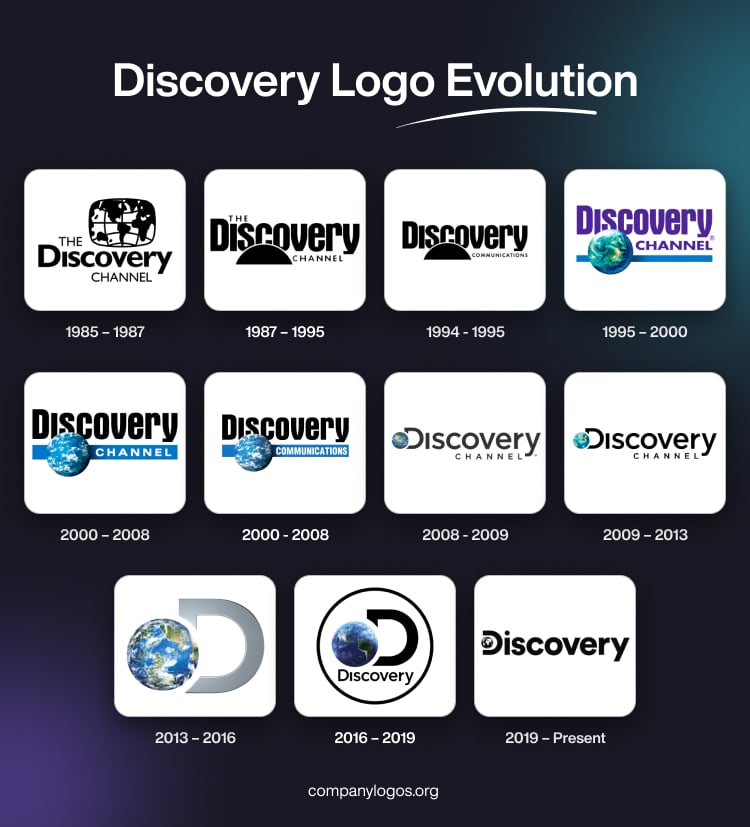
Discovery is a US-based media company that owns the flagship Discovery Channel, along with several others. These include Animal Planet, Eurosport, Food Network, and Travel Channel. Established in 1994, Discovery has several divisions, such as TV broadcasting, sports, and education. Discovery is known for offering informative programming in the areas of science, nature, human adventures, and technology.
The Discovery logo has undergone several transformations since the channel’s inception. These iterations reflect changes in design trends and the brand’s evolving mission. The article explores the various logo changes associated with Discovery, among other details about the company.
The Genesis of the Discovery Logo (1985 – 1987)
The first Discovery logo featured a black-and-white world map, with “THE Discovery CHANNEL” written in the Gill Sans MT font in three levels. The logo was set inside a rectangle with rounded sides, and it resembled a TV screen, which was a subtle hint of its medium of operation. The world map highlighted the channel’s ambition to explore and share global discoveries.
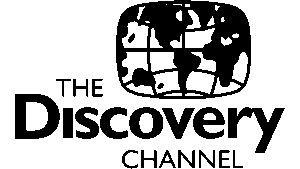
(1987 – 1995)
In 1987, the logo was redesigned in a monochrome colour palette. The focus shifted to the channel’s name, with “Discovery” written in the Aurora Bold Condensed font. The world map was replaced by a black semicircle. This symbol was interpreted either as a rising sun or the upper part of the image of Leonardo da Vinci’s Homo Vitruvius. In this logo iteration, the words “THE” and “CHANNEL” became less prominent, and the emphasis was on the word “Discovery.”
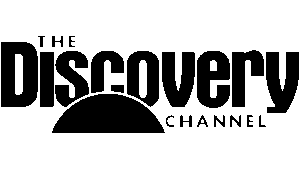
(1994 – 1995)
In the logo iteration of 1994, the words “THE” and “CHANNEL” as they appeared in the previous iteration were removed. At the same time, the bold, black wordmark “Discovery” was retained. To the right of the black semicircle, the word “Communications” in black uppercase but in a much smaller size was placed.
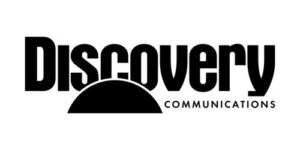
(1995 – 2000)
In 1995, the name was simplified to just “Discovery Channel” in purple. The black semicircle of the previous two logo iterations was replaced by the image of a three-dimensional globe. The globe image was painted in blue, white, and green to symbolise the global reach and focus of the channel’s worldwide exploration. The wordmark “Discovery” written in the Aurora Bold Condensed font and in a purple colour palette remained. The bottom of the logo had a thick blue horizontal line and the globe in the foreground.
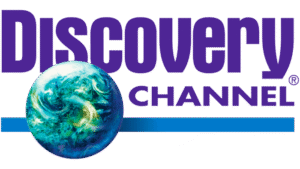
(2000 – 2008)
The 2000 logo saw the colour palette shifted to blue and black, with the globe becoming lighter and more integrated. The word “CHANNEL” now appeared in white within a horizontally stretched blue rectangle beneath “Discovery” in a Helvetica typeface. This period reflected a blend of tradition and innovation, as it maintained the globe while introducing contemporary typography and colour changes.
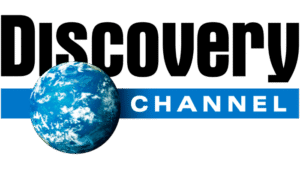
(2000 – 2008)
This logo iteration retained the previous design but replaced the word “CHANNEL” with “COMMUNICATIONS” in white.
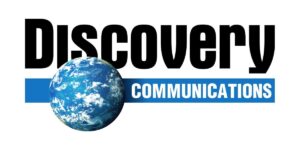
(2008 – 2009)
This time around, the logo was redesigned by a Boston-based company called Viewpoint Creative. Here, the wordmark “Discovery” was written using a Bold Gotham typeface, instead of the classic Aurora Bold Condensed typeface earlier. Also, the second wordmark, “CHANNEL,” was written using a thin sans-serif typeface with wide spacing between the letters.
The horizontal blue line was removed, and the globe was placed in the bottom left corner of the letter “D.” In this logo, the “D-globe” could be used as a standalone icon in order to enhance the brand’s adaptability across platforms.
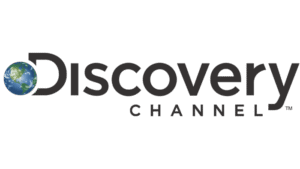
(2009 – 2013)
In 2009, the Discovery logo was further rebranded by Royale. Here, the logo was slightly modified by adding newer continents and making the wordmark “CHANNEL” a little bigger in size. Besides, the letters “c” and “o” were spaced apart, and the globe was detached from the letter “D.”
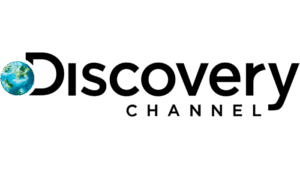
(2013 – 2016)
In 2013, the logo was further simplified by Radley Studios, wherein the letter “D” and the globe monogram became the primary visual identity. In terms of aesthetics, the letter “D” was given gradient effects and a silver outline to look three-dimensional and modern and to make the logo align with minimalist design trends. The detailed globe had continents, green forests, islands, blue oceans, and white clouds as visible elements.
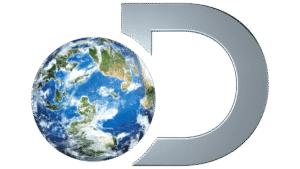
(2016 – 2019)
The 2016 logo iteration featured a bold black “D” with the globe. The elements (the globe and the letter “D”) were encased within a black ring. This created a unified and encapsulated design. Also, the wordmark “Discovery” in a black Gotham font was retained, and the overall look was more focused and locally relevant.
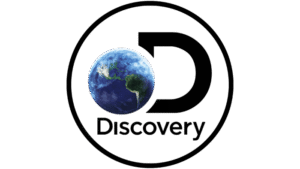
(2019 – Present)
The latest logo, redesigned by Roger, a Los Angeles-based design agency, in 2019, modernised the “D-globe” monogram. Further, the globe was flattened and placed within the letter “D,” and the font of the wordmark “Discovery” was updated to Sharp Sans Extra Bold.
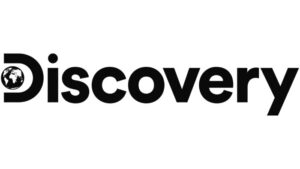
The Elements of the Discovery Logo
Font
The wordmark that forms a part of the Discovery logo has been designed using a circular black Sharp Sans Extra Bold typeface.
Colour
The colour palette used in the latest Discovery logo consists of black and white.
The History of Discovery
Discovery began its journey in 1982, when John Hendricks founded its parent company, Cable Educational Network Inc. However, the channel was officially launched on June 17, 1985, and went on to reach 156,000 households with a 12-hour broadcast each day. Its early mission was based on educational programming and offered a mix of cultural and wildlife documentaries, science specials, and historical features.
Interestingly, about 75% of the programmes aired on the Discovery Channel had never been seen on U.S. television. Unique for its time, Discovery also included Soviet programming, such as the news show Vremya, and provided teletext services with news, trivia, and information.
The 1990s marked a period of rapid expansion and diversification for Discovery. The company acquired The Learning Channel (now TLC) in 1991 and by 1996 had launched new networks, including Animal Planet, Discovery Kids, and the Science Channel. This decade also saw Discovery extending its international reach by launching channels in multiple languages and regions. During this time, the channel became known for flagship programming events like Shark Week, which debuted in 1988 and quickly became a cultural phenomenon.
By the early 2000s, Discovery underwent a significant brand evolution, which included a simplified name, “Discovery Channel,” and a series of logo updates to reflect its broader mission and audience. The channel began to incorporate more reality-based series, such as MythBusters, Deadliest Catch, and Dirty Jobs, in an effort to attract a wider viewership. This shift, however, drew some criticism from purists who lamented the channel’s moving away from its original focus on education.
In the modern era, Discovery embraced digital expansion by launching its TV Everywhere service, Discovery Go, in 2015 to offer live and on-demand content. The channel’s parent company, Discovery Communications, rebranded as Discovery, Inc., and later merged with WarnerMedia to form Warner Bros. Discovery. While Discovery remains known for its science and nature programming, its lineup now includes a variety of reality TV, automotive shows, and survival challenges.
These include series like Planet Earth, How It’s Made, and the ever-popular Shark Week continuing to draw audiences. Adapting to changing media habits, Discovery has also launched the streaming service Discovery+ and merged its offerings with HBO Max to reflect the industry-wide shift toward digital platforms.
Discovery Channel is available in over 70 million U.S. households and hundreds of millions worldwide. This makes it one of the most widely distributed cable channels. However, despite changes in programming and delivery, Discovery is associated with curiosity, exploration, and a passion for learning about the world. Its journey from a niche educational network to a global media powerhouse shows the broader evolution of television. This involves balancing tradition, innovation, and a steadfast commitment to inspiring audiences everywhere.
Interesting Facts About Discovery
- Discovery Channel was founded in 1982 by John Hendricks and was officially launched on June 17, 1985. It initially reached only 156,000 households and broadcast for 12 hours daily. Remarkably, about 75% of its early programming had never been aired on U.S. television before. It focused heavily on educational content like cultural and wildlife documentaries, science, and history.
- In its early years, Discovery was unique for airing Soviet programming. These included the news show Vremya, during the Cold War era, and it also provided teletext services. These included news, trivia, and satellite TV guides, which were quite innovative at the time.
- Discovery Channel’s programming evolved significantly over time. While it started as a strictly educational channel, by the 2000s it shifted toward reality-based series such as MythBusters, Deadliest Catch, and Dirty Jobs, blending entertainment with education and attracting a broader audience.
- One of Discovery’s most iconic and enduring programming events is Shark Week. Launched in 1988, it became a summer staple for viewers fascinated by marine life and sharks.
- Discovery has expanded globally and is now available in over 400 million households worldwide. This huge footprint makes it one of the most widely distributed cable networks.
- The channel has embraced technological advances by launching services like Discovery Go and the streaming platform Discovery+. It has thus adapted to changing viewer habits and the rise of digital media.
- Beyond entertainment, Discovery has occasionally been used as a platform for unique broadcasting opportunities. These include airing evangelistic programs like Amazing Facts in 2009.
- Discovery’s programming often explores fascinating historical mysteries and scientific discoveries. These include investigations into ancient maps and secret missions, which continue to captivate curious audiences worldwide.
Finally
The journey of the Discovery logo shows the power of thoughtful design evolution. The various logo iterations balance heritage with innovation and always reflect the brand’s core mission, that is, to inspire curiosity and connect people with the wonders of our world.